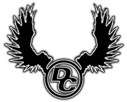I often get requests for information about setting up a new website. Many times the inquirer has come to the point where they are ready to start site development and they just have some general questions about what they will need. They have a great product – service – idea – or story. So, what is the next step?
The first thing any web site will need is a domain name. Any domain name will do really but as a tip I would say shorter is better. If not shorter than something really easy to understand or remember over a conversation. If you have to repeat it several times or start spelling it out that might be a bad sign for typical marketing purposes where they may just get a glance. This is just a preference as when I am speaking to someone over the telephone about a domain its always nice to be able to get the domain name quickly. It might also help if you are giving out your email address. Just think of the future when you are out of business cards and are trying to tell someone your domain. Wouldn’t it be nice if it was just as easy as info@abc.com . Now you can move on. Opposed to a situation of something like elizabeth_masterson42332@really-long-domain-name.com. Long names like this are however sometimes relevant or important when considering Search Engine Optimization. That’s a whole different conversation / article though.
Domains names are purchased on a yearly basis. How much do domain names cost? It seems the prices now average $11 to $15 dollars for .com, .net, and .org. (as of 08-19-2010). There are a lot of other extensions available like .info or .tv . They have different pricing structures. I tend to stay with the .com. .net and .org extensions when possible. I’m sure there are good reasons to go with a .info or .biz. Like for example abc.com is gone, so maybe abc.biz is available.
Where does one attain a domain name? Those are purchased ay any domain registrar. I used to like Godaddy, except that now they seem to bombard you with offer after offer, over and over when you are just trying to get a domain name registered. Reminds me of the old search engine models. I never tried GoDaddy’s hosting, but I have found a web host that I really like and have used several years now with no problems. You can find registrars by searching: domain registrar in your favorite search engine. I just saw that network solutions is having a “limited to time special” for .com names at $6.99 a year. It looks like the normal price is 35 a year. I used to use Network Solution in the 90’s. Then I found out I could pay around ten dollars on average per year opposed to $35. The years pass and that $35 can start adding up when you have multiple domain name purchases and multi-year renewals. By the way if you are currently using a domain registrar and you want to transfer it. You can do that . You will want to transfer a month or so BEFORE your domain is up for renewal or expired. I have put off transferring one of my domains at a more expensive registrar for quite sometime. And my domain is still there after several years.
Second would be your web hosting. I sometimes get comments similar to “well I payed for the domain so I have a website”. After you register a domain the domain name is now just registered by you. You have the privilege to use it how you like for as long as you paid to register it. After a domain is registered you can then point the domain over to a web server or Name Servers. What are Name-servers? Nameserver is basically just a computer connected to the internet , ready to serve a webpage. Mine uses Apache web-server software to serve up webpages. But other types are available. A Nameserver address will typically look something like this: ns1.yourwebhostname.com and ns2.yourwebhostname.com. You usually point the name-servers after you have acquired a web hosting account. The webhost will then give you the Nameserver addresses names you should use. Never assume by the way that the nameserver addess is just NS1.MyHostname.com because if it is a larger web hosting company then they may have many different Nameserver addressses. The Nameserver addresses are usually entered into the control panel that is often provided by domain registrars.
Third (ish) is Content. You want to have content ready to go if possible. It really depends on your goals. If you simply want to get a web presence up then by all means just create what is often called a brochure site with just a bit of your contact information and a little about what you do. This is certainly better than not having a website up at all. However proper planning can pay when it comes to getting your site found by search engines and therefore your potential clients and customers. I believe that one of a websites main goals should be is to communicate for you. There are many occasions where a website could save you time and effort by answering the questions for you that might otherwise generate phone calls to answer simple questions. You can increase the communicative power of a website by also including contact forms which can be used to capture more in depth questions . When you have your content ready you can then create a bit of an information architecture plan. The most Basic sites have a standard website scheme . One I have seen used often includes:
Home – About Us – Services – Contact – News
The Home page will almost always give you the most general information about a company or person highlight certain items. It will also often lead you off into other directions or sections of the site. The About Us page will give more specific information typically and may even branch into other area (which might require more pages) . Services is self explanatory but may also lead into other pages and sections. Contact pages these days almost always will include a contact form that will allow the visitor to send a message. Contact pages can also lead to separate contact areas for larger companies. The News section could be omitted and would only be recommended if the company or site owner has the time, resources and ability to update it fairly regularly.
There could be much more involved in a website setup and there could be less. But the items I stated above are the first initial steps to actually getting the ball rolling. The Development process. Could be covered in another section.

